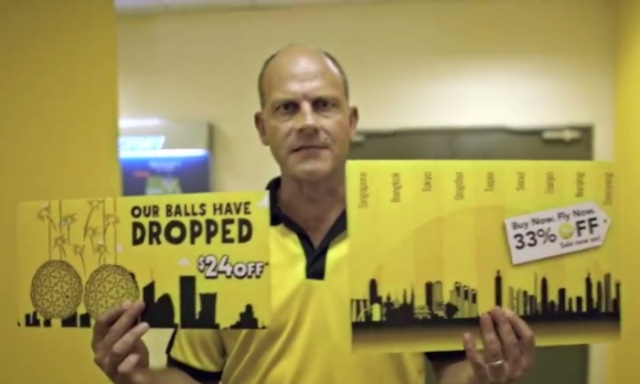Last month, Marketing reported news of Scoot’s chief executive Campbell Wilson leaving the brandalong with Steven Greenway, head of commercial for the budget airline. Wilson is set to take on a new senior position of acting SVP sales & marketing parent company SIA.

Wilson’s name has, over the years, been synonymous with Scoot’s. As the man in charge of starting up the airline in 2012, he was seen as the CEO which injected the “free-spirited” persona the brand carries. Wilson has often also fronted several campaigns for the brand, making a statement that a CEO is indeed the face of the brand.
But as it happens in most cases, a change in top management leads to a change in direction for the brand and how it markets itself– especially with a CEO such as Wilson who was also closely tied to its image.
In fact, in 2014, when Sharon Koh, former marketing lead of the company left, she thanked Wilson personally in a heartfelt blogpost for supporting the marketing teams’ daring and often cheeky vision. When the brand first took off, Wilson had simply handed her a thumb drive, consisting of the Scoot logo, a cartoon picture of the plane-to-be and an animated video of it taking off.
“He also handed me a concept called Scootitude, a blank canvas and asked me to create a picture for the Scoot brand[…] Thank you Campbell, for this opportunity and trusting me to grow and nurture the Scoot brand like my own baby,” she had then said.
Agency partners such as Publicis and Performics also raved about Wilson’s leadership style. When asked if a change of management worries them, both leads of the agencies declined to comment.
However, Lou Dela Pena, CEO, Publicis Communications Singapore said Campbell and Steven were clients who clearly understand the tremendous value that creativity can add to the bottom line when done right. Meanwhile, Vivian Yeo, head of Performics said it is a common practice in the industry, for new management to be introduced as part of a client company’s succession plan.
“We are #yellowandproud to share a great culture of partnership with Scoot, which enables Performics to respond swiftly to Scoot’s dynamism,” Yeo said.
So with the face of Scoot now no longer with the company, is the brand’s DNA under threat? Moreover, should agency partners be worried?

Shufen Goh, founder of R3 says that it is true that agency partnerships are often vulnerable amidst people changes on either side, and the more senior the change of guards, the more likely the reviews of partnerships.
Her experience has shown that relationships that survive changes have built up a trust bank anchored on strong culture and ways of working. That is not totally dependent on just one or two people.
“Agencies are seen as a strategic partner and custodian of the brand. So the acid test for agencies is to answer this: Are we the custodian of the brand? And have we built an accountable relationship based on trust with our clients ?” she said.
For brands to endure change of guards on both sides, they need to invest in a way of working that supports its culture and brand DNA. This should always be defined by the brand owners, but stewarded by both client and agencies, Goh said.
When asked the Scoot team how it would ensure the unique brand DNA is not lost, Leslie Thng, chief commercial officer of Scoot and Tiger said the airline, much like Tiger, will also continue its marketing plans and objectives already set out for the year. The marketing for each of the respective brands under Budget Aviation Holdings, will remain independent so Scoot “will not change its quirky ways.”
“The Budget Aviation Holdings was established to manage both the budget airlines to fully realise commercial and operational synergies. ‘The unified management team at Budget Aviation Holdisngs is committed to continue – as well as grow – the success of both brands including multiple award- winning Scoot, which was acknowledged at the recent MARKies and as Marketer of the Year 2015,” he said.
Source: Marketing





